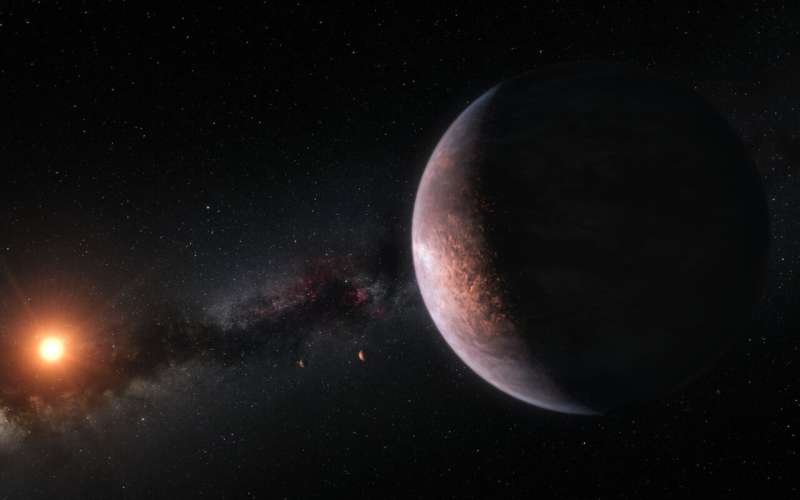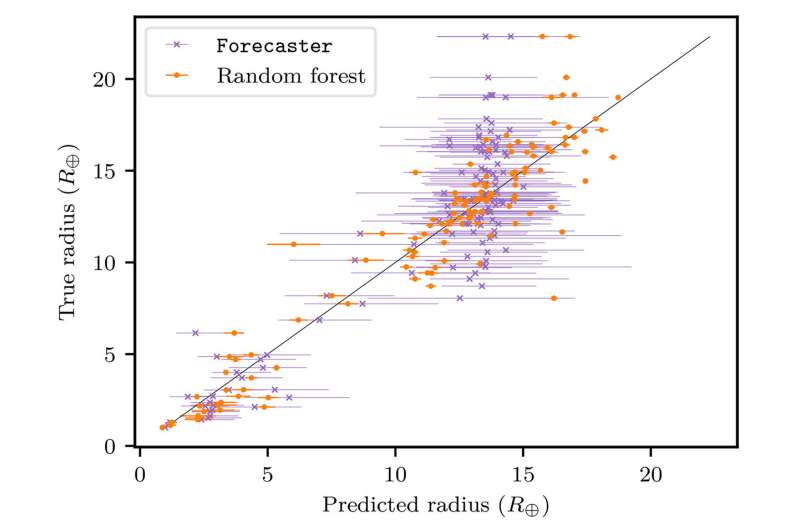Astrophysicists use artificial intelligence to determine exoplanets sizes

Using a machine learning technique, a team of Instituto de Astrofísica e Ciências do Espaço researchers constrained the radius of an exoplanet with known mass.
Solène Ulmer-Moll, a Ph.D. student at the Science Faculty of the University of Porto (FCUP), explains this result was obtained by using knowledge from different fields: "This novel way to forecast exoplanet radius is a perfect example of the synergy between exoplanet science and machine learning techniques."
To characterize a planet, both its mass and radius are needed in order to find the planet's density, and from that, to infer its composition. But both data are only available for a reduced number of exoplanets, since the mass is often determined by radial velocity measurements, while radius is measured with the transit method.
The team developed an algorithm that accurately forecasts the radius of a wide range of exoplanets, if several other planetary and stellar parameters are known, including the exoplanet's mass and equilibrium temperature. Solène Ulmer-Moll says, "For the hundreds of planets discovered with the radial velocity method, we are now able to predict their radius. We can then understand if these exoplanets are potentially rocky worlds."

So far, only the mass of an exoplanet has been used to predict its radius, but the team is working on changing this paradigm by incorporating other planetary and stellar parameters to strengthen their predictions.
Nuno Cardoso Santos (IA & FCUP) says, "This work beautifully puts together the expertise in our team, uniting the existing knowledge about exoplanet detection and characterization and the statistical analysis of the detected systems, using state-of-the-art mathematical tools. These are essentially the same mathematical tools that are now leading to the development of autonomous cars."
More information: S. Ulmer-Moll et al. Beyond the exoplanet mass-radius relation, Astronomy & Astrophysics (2019). DOI: 10.1051/0004-6361/201936049
Journal information: Astronomy & Astrophysics
Provided by Astrofísica e Ciências do Espaço




















